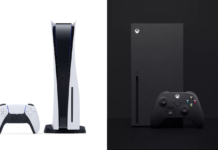Since its Japanese launch in 1986, the Metroid franchise has distanced itself from genre conventions by offering a different type of gaming experience. Whether the entries in the series were being developed by Nintendo, or whether the Big N was handing the projects over to developers such as Retro Studios and Team Ninja, Metroid has always been able to craft an identity all its own; this is a series that does things its way rather than conforming to the norm. In the process, it has sparked interest in gamers, and it has spawned ideas from a variety of game creators, making it not only one of the most unique shooters ever created, but also one of the most influential.
In the ‘80s, platformers were king, but there was a sect of gamers who wanted action, missiles, and creepy alien creatures to dismantle. Metroid was the game for that crowd. Rather than just shooting anything that moved, gamers who experienced Metroid learned to explore every inch of the game’s environments, collect upgrades, backtrack to previously visited locales, and try to stay alive, all the while taking on alien creatures that grew considerably stronger as the game progressed.

The Metroid formula was different from the competition. Gamers who managed to beat Metroid in a certain amount of time received the opportunity to see the identity of the masked bounty hunter heroine Samus. Rather than being a buffed and scarred up military-esque hero, Samus Aran was all female. During a period when females in video games were nothing more than damsels in distress, it was refreshing to see Nintendo take this approach.
As the years passed, the Metroid franchise slowly continued to evolve. Metroid II: Return of Samus on the Game Boy featured new moves, new weapons, and a useful save feature. Super Metroid on the SNES took the formula set forth by its predecessors and improved on it vastly, with all new abilities for Samus and better level design.
The franchise only evolved more and became more revolutionary with the launch of the Nintendo GameCube. Nintendo entrusted the license to a small company in Texas known as Retro Studios, and thus the Metroid Prime series was born. This wasn’t a rear-view third-person Metroid game like many fans had expected, though. It wasn’t even a side-scrolling Metroid game. For the first time ever, Metroid entered the first-person realm. Rather than going the sci-fi FPS route, however, Retro took Metroid down memory lane…to adventure. Just like the first Metroid wasn’t simply a side-scrolling shoot ‘em up, Metroid Prime wasn’t simply a run and gun FPS. No, Metroid Prime was a first-person adventure game.

Samus explored massive lands, upgraded her weaponry, and used her visor to scan every little detail around her, revealing more of the game’s plot in the process. Metroid Prime had the look of a first-person shooter, but it had the feel of an action-adventure game. The Call of Duty and Halo crowd may not have liked it, but gamers who wanted a long-lasting Metroid adventure on the GameCube definitely did. Metroid Prime was followed up by two sequels. The formula was successful each time, and gamers loved every minute of exploration in these games.
The trilogy of Metroid Prime ended, so what was next for the series? Nintendo once again chose to have a Metroid game developed by a third party: Team Ninja. Metroid: Other M was revealed at E3 2009, and the internet was soon filled with images and trailers for a Metroid title, which once again looked to switch gears. At this year’s E3 in Los Angeles, a demo for the game was playable at Nintendo’s booth, and it featured everything from side-scrolling gameplay to first-person aiming. There was even a cinematic cut scene, indicating the game’s more story driven approach. It’s yet another change for the series, but one that looks and feels excellent.

Metroid, Metroid Prime, Metroid: Other M. Each of these titles is profoundly different from one another, but they have one thing in common: action-adventure. Metroid did not create the shoot ‘em up, the action-adventure, or the first-person shooter. It did, however, manage to combine these three elements in different ways throughout the years to create a compelling, rewarding gaming experience that cannot be imitated. In that sense, Metroid is revolutionary as any series can strive to be. As a whole, however, the Metroid series is evolutionary, changing things up every few years and creating brand new gameplay experiences for gamers. Metroid is a fearless series, willing to do something drastically different every few years and succeeding with every single entry. It’s hard to imagine other franchises pulling this off without a hitch. Because of that, Metroid is not only a revolutionary shooter; it’s not only an evolutionary shooter; it’s a unique, timeless, and influential shooter.










